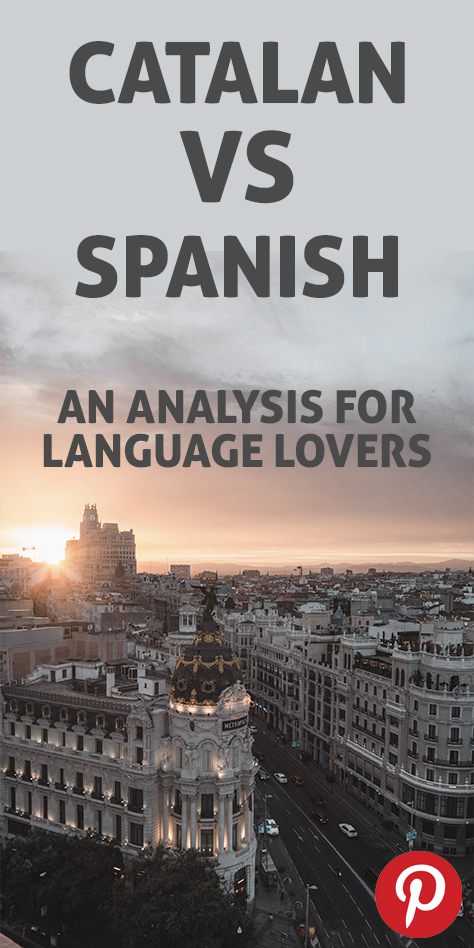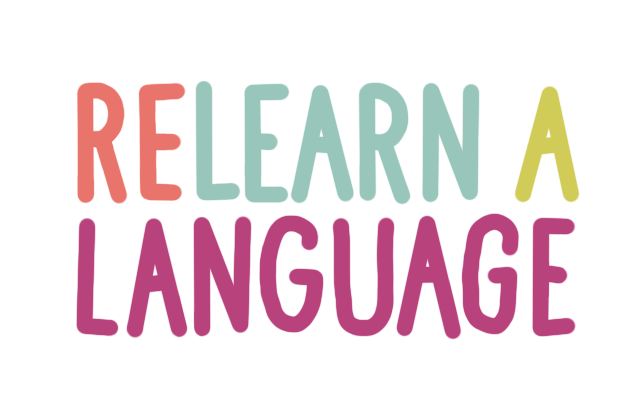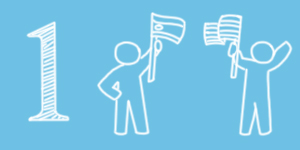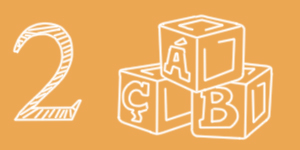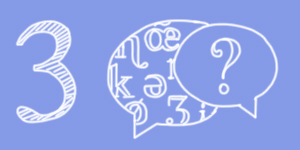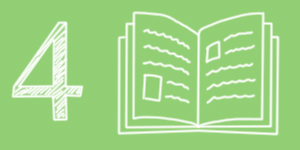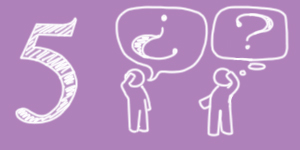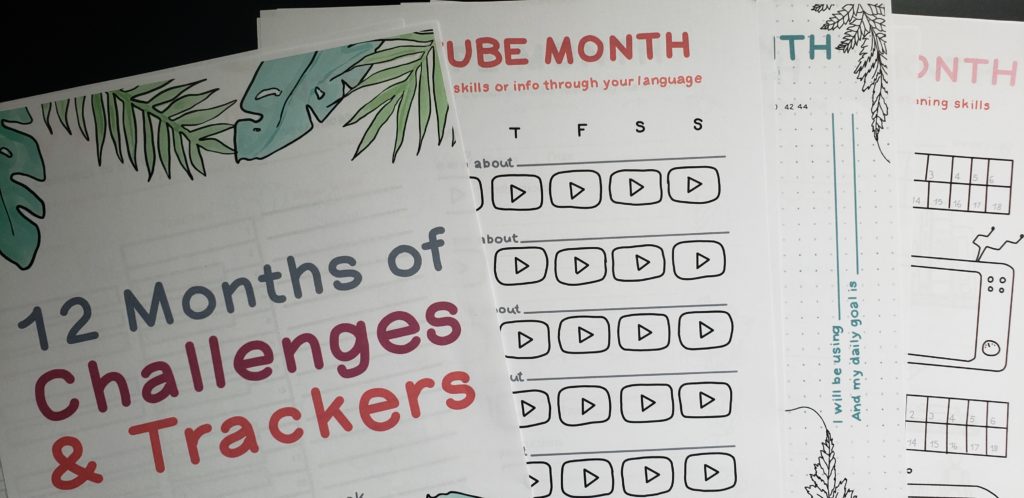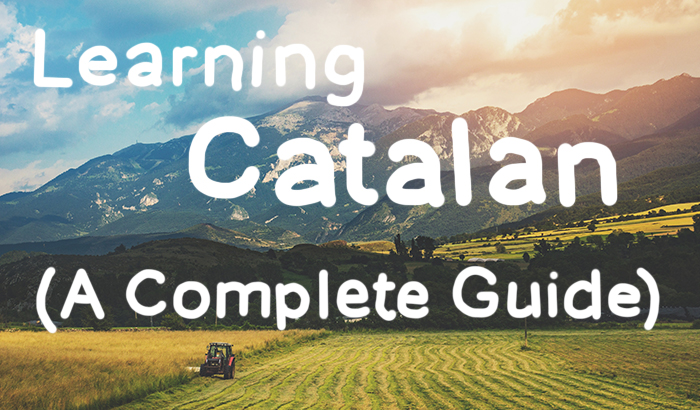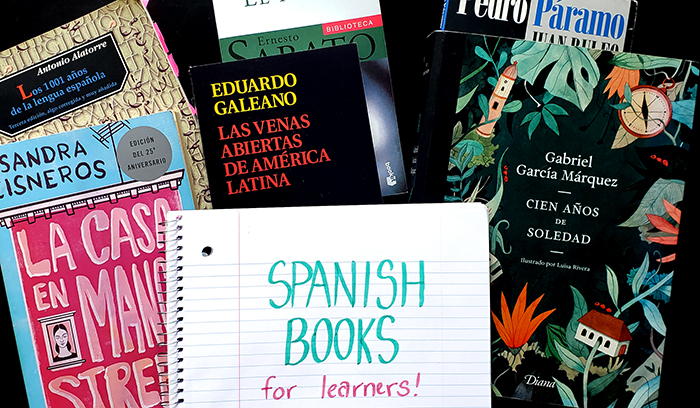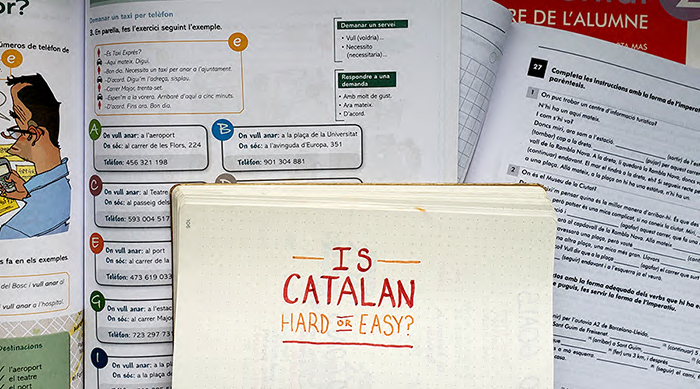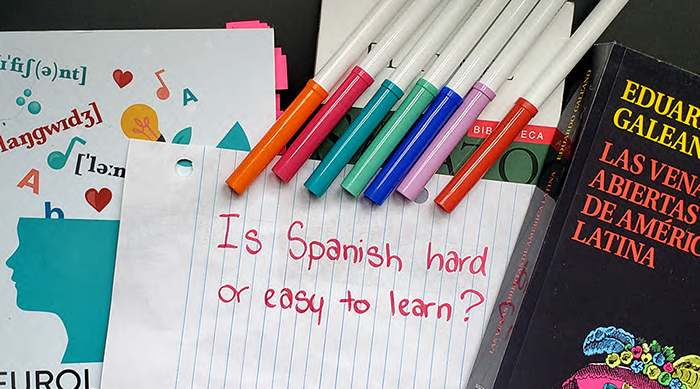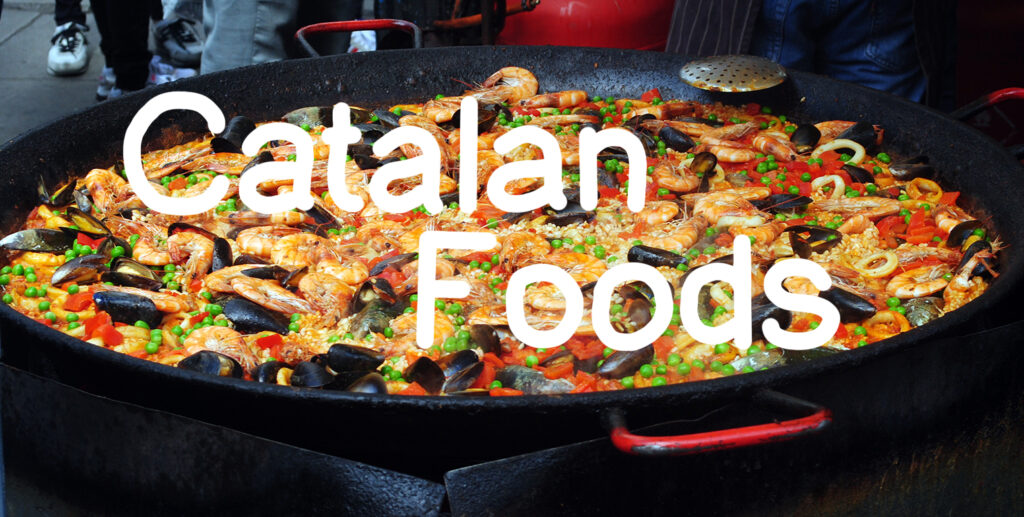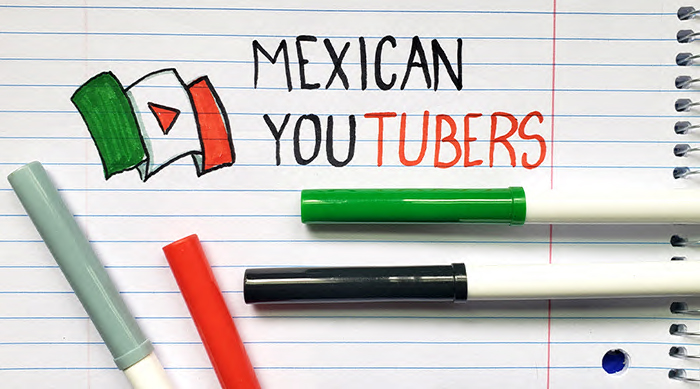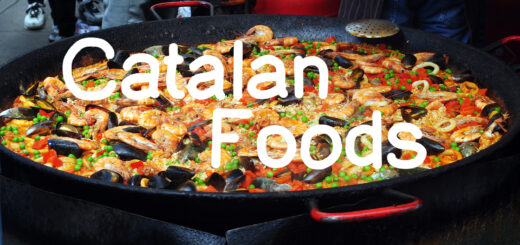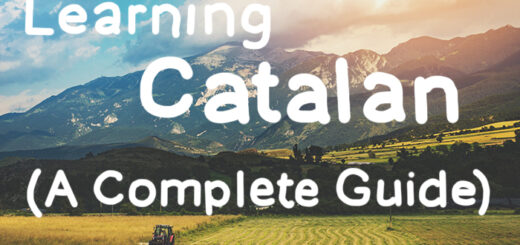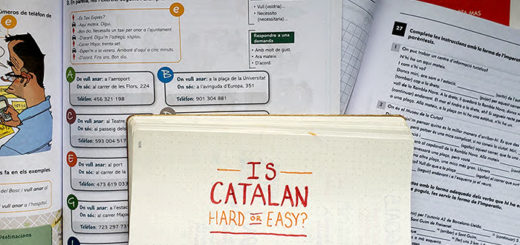Catalan vs Spanish (History, Pronunciation, Grammar, Vocabulary)
by Marissa Blaszko · January 6, 2021
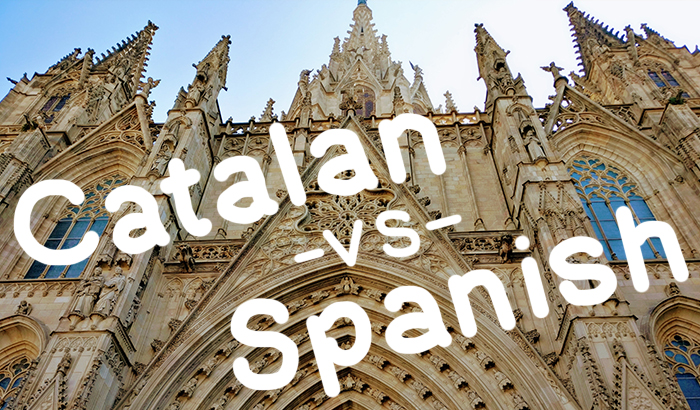
Exploring the linguistic differences between Catalan vs Spanish is a treat for any curious person.
The goals of this article are (1) to show you how the languages evolved together over time and then (2) contrast Catalan vs Spanish in a visual way.
Because while everything in this article is based in real linguistics and academics… the goal of this blog is always to explore and enjoy learning.
By the end of this article, you’ll:
- know the history that shaped the two languages;
- be able to identify key pronunciation differences;
- learn the main grammatical differences;
- learn a bunch of fun Catalan vocabulary.
So let’s jump in!
NOTE: In this article, I’ll be calling the language spoken in Madrid “Spanish”, although in Spain that language is normally called Castellano or Castella. I will also be calling all variations of Catalan (including Valencian or Mallorca Catalan) into one “Catalan” category. The reason for me doing so is simple: that is what we call these languages in most English dialects, and that is the word people use when searching online.
1. The Linguistic History of
Catalan vs Spanish
Before we jump into the practical things (like books and YouTube) or fun things (like Netflix or movies) we need to address the history of the Catalan language.
Many of today’s Catalan speakers lived through a period where speaking their native language in public was illegal.
If you learn the history, it’s speakers (and your future self) will all thank you.
So while this isn’t a comprehensive education by any stretch, here’s the framework you’ll need when exploring the language.
(Si ets Catala i estàs llegint aquiest article, jo sé que es una siplifació de tot. Ho sé.)
10,000 BCE - 200 BCE
Bands of hunters and gatherers bring stone tools out of Africa as they move north in search of better game and food.
They speak a language totally unlike Latin or Greek (nevermind English, Spanish, or German), and settle across the Pyrenees mountains and Iberian Penninsula, claiming it as it’s only inhabitants.
For 10 thousand years small bands live, hunt, cook, laugh, and raise generation after generation of children.
And one day, a ship crossed the horizon.
200 BCE - 472 CE
Legions of Roman soldiers spilled over Iberia. As they began mining the peninsula of silver and gold, they planted the seeds of their new, foreign language:
Latin.
The grandchildren of those original hunters began using the empire’s language in trade and government. And within a few generations, they began to use it in their homes.
Some refused. In the Eastern Mountains, the euskaldunak clung to their language and way of life–and still speak the language known as “Basque” today.
But over the rest of Europe, Latin-speaking conquerors stripped the lands of all precious metals and prehistoric languages.
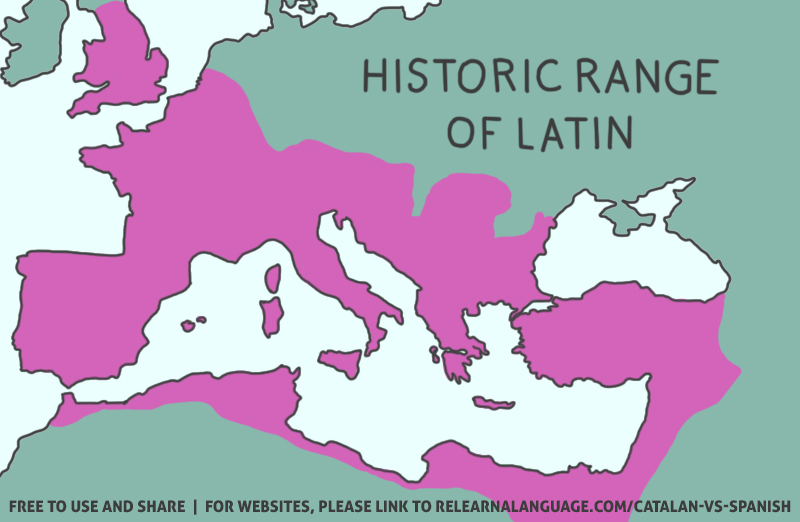
473CE - 1000CE
And Latin hung tight to the peninsula long after the Roman empire fell.
Invaders from the North and South came one after another seemingly even century. But no other language managed to conquer the peninsula.
Instead, they left traces of their own cultures and worlds like footprints on an ever-changing beach.
When Arab-speaking armies invaded the south of Iberia, they brought luxuries like pillows. It changed the Latin coxa to their own word: almohada.
Farther north, accents shifted less slowly, and the word became cushion, le coussin, or el coixí.
When Germanic tribes came down from the north, they changed the color of the sky. The Latin caeruleum became blue or blau, while in the south it became the Arabic azul.
Life was changing, and Latin along with it.
1000 - 1200
1060 CE
1200 CE
In the mountains between modern France and Spain, a monk sits down to write a poem.
It tells the story of Santa Fe, or Saint Faith. It talks of martyrdom, torture, and the triumph of faith.
But it speaks in the common tongue.
Abandoning the High Latin of his education, the monk speaks directly to the people in their own, everyday language.
Cançó de Santa Fe becomes the first piece of Catalan literature.
One night, maybe after a night of drinks with friends or a day of trade in the market, a scholar puts pen to paper. He writes down a popular poem for the first time–maybe for official church record, or maybe just so he remembers it in the years to come (and win some friend with his own retelling.)
The poem is written in a particularly bastardized version of Latin so far off from how he was taught to write by scholars that it could be barely called “Latin” at all.
But, he might have thought to himself, it’s how people speak.
Cantar de mio Cid becomes the first piece of Spanish language literature.
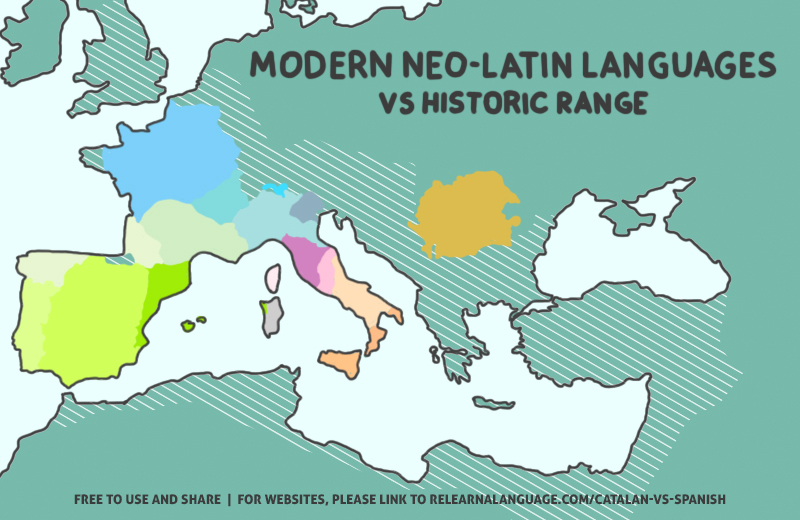
1200-1479
New powers rise up
The Crown of Aragon stretches the Baltic sea, using Catalan as the language of commerce.
The armies of the Kingdom of Castile speak together Castillian Spanish as they clash with the King of Portugal and Portuguese speaking troops.
The former Latin dialects solidify themselves as unique, independent languages.
1479
In an effort to finally overthrow all outside forces once and for all, the Catalan-speaking Kingdom of Aragon joins with the Castillan-Spanish-speaking Kingdom of Castille.
The result is the biggest political undertaking in the Iberian Penninsula since Roman rule. Though both crowns maintain much of their sovereignty (linguistic and otherwise), they formally join and become the Kingdom of Spain.
1492
Catalan
Spanish
Catalan continues as a major language of commerce throughout the Mediterranian, linking the Kingdom of Spain to powers in modern-day Italy, Greece, and France.
It influences and is influenced by these similar tongues. Nearly all Mediterranean islands find it’s thumbprint in their own neo-Latin lexicons.
Looking for new channels of trade and commerce, Queen Isabella sends three ships to find a new trade route to China and India.
A chain of events is set into motion. Spanish becomes the new global language of conquest.
1500-1700
Catalan
Spanish
In 1539, King Francis I makes French the official language of administration and court proceedings in his country. The Catalan spoken in the south of that region loses it’s status as a language of politics.
Los expatriados, the plantation overseers, government employees, and mine foremen from Spain, use Spanish as the official government language in colonies across 4 continents.
1715-1809
Catalan
Spanish
Inside the Kingdom of Spain, speakers of Castillian Spanish replace Catalan with their own language as the official government language in 1809.
This includes all Catalan-dominant areas, including Mallorca, Barcelona, and Valencia.
The Spanish crown is at the height of its power. It’s estimated that 12% of the human population is under the rule of the Spanish speaking crown. [source]
1800-1900
Catalan
Spanish
In 1808, Napoleon I marches on Spain and occupies Catalonia, seizing the major cities of Barcelona and Girona.
For the first two years of the occupation, Catalan is briefly reinstated as the local official language. But by 1810, Catalunya is annexed into both the French state and French language until 1814 when returned back to Spain. [source]
Though Catalonia remained Spanish-speaking for the rest of the century, Europe’s industrial revolution gave birth to the Renaixença: Catalan’s linguistic Rennaisance.
In 1809, the people of Ecuador pick up guns, machetes, and work tooks and rebel against Spanish rule.
This signals the beginning of the decline of the empire.
But not it’s language.
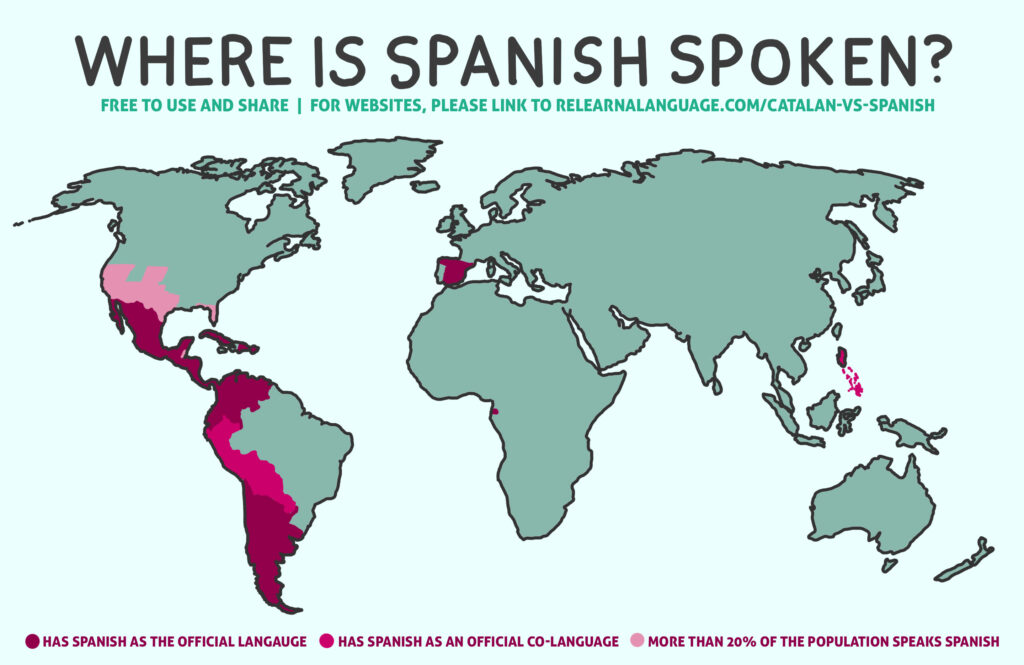
1900-1939
Catalan
Spanish
La Renaixença continues into the 20th century: as centralized Spanish power fades, the Catalan language flourishes.
Philospher and linguist Pompeu Fabra took on his life’s work: a spelling and grammar reform of the Catalan language meant to unify the dialects under one comprehensive set of literary rules.
Rival literary movements Noucentisme and Modernisme published piles of poetry, and political statements.
As Catalan newspaper bloomed, future 20th Century Catalan literature heroes like Mercè Rodoreda and Josep Carner began to write and publish their first works as young journalists.
A truly modern Catalan was taking shape.
By the beginning of World War I, the Spanish Crown had lost almost all of its colonies.
But it’s language spirits on.
In Argentina, Jorge Luis Borges births a new literary genre: the philosophical short story. Venezuelan Romulo Gallegos writes his masterpiece Doña Barbara. The Cuban Alejo Carpentier coins the term “lo real maravelloso” and magic-realism begins to take shape.
The Crown is no longer at the center of its own language. But Spanish literature becomes an international force.
1939 - 1975
“They laid me down again while somebody fetched a stretcher. As soon as I knew that the bullet had gone clean through my neck I took it for granted that I was done for. I had never heard of a man or an animal getting a bullet through the middle of the neck and surviving it.”
-George Orwell (who, several years after nearly dying in the Spanish civil war, would become the author of Animal Farm and 1984)
Fascist forces win the war in Spain.
It is illegal to speak Catalan in public.
Catalan books are burned and school children beaten for speaking it in the classroom.
November 20, 1975
Catalan and Basque refugees celebrate in the cafes of southern France and throw parades on the streets. Inside of Spain, their countrymen hold their breath to see what will happen next. [source]
Franco is dead.
Spain returns to parliamentary democracy and for the first time in nearly 4 decades, Catalan speakers will soon be able to vote on the legal status of their native language.
1980s - Present
Catalan
Spanish
Catalan goes through a new Renaissance.
In 1983, TV3 is founded as a public Catalan-language media outlet in Spain.
In the 80s and 90s, Catalan is restored as the co-official language in parts of Spain. Schools, businesses, courts, and public offices all operate in the mother tongue of their citizens.
In the early 2000s, government initiatives are set up to teach the language to adults in Spain and around the world, often for free.
By the 2010s, Catalan language podcasts, YouTube channels, indie-publishers, and blogs spread across the Internet.
Spanish continues as a National language of 20 countries, giving birth to some of the most awarded literature and music globally.
It is the 4th most-spoken language in the world (after only English, Mandarin, and Hindi) and continues to spread into countries like the US and Canada through waves of migration.
It continues to be the national language of Spain. Even in areas like Valencia or Basque Country, where it isn’t the language of daily life, monolingual Spanish speakers still have the right to receive state services in the language.
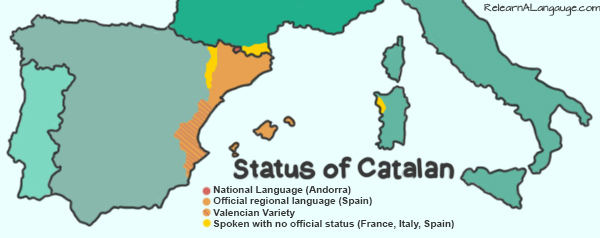

2. Catalan vs Spanish Alphabets
Most Romance language alphabets, including Spanish and Catalans, are largely the same.
First, let’s look at the overlapping letters in both alphabets:
A B C D E F G H I J K L LL M N O P Q R S T U V W X Y Z
Out of these commonly shared letters, there are only 3 of note:
- K and W only exist in words of foreign origin. For example Nova York / Nueva York or Wasabi / Wasabi.
- The LL (a soft L-like sound) exists in both Catalan and Spanish–but not English.
Other letters, such as B, V, G, or X have relatively similar pronunciation rules (as well as a few differences we won’t be getting into here).
And now, letters they have unique to themselves:
Ç – Pronounced as the Spanish s-sound. Caçar is pronounced similar to casar.
l•l – Two Ls separated by a dot are pronounced as a singular L. So il•lustració is pronounced similarly to illustración.
Ñ – The famous Spanish ñ is created with the ny combination in Catalan. So España is pronounced simiarly to Espanya.
Finally, each language has their own accent markers.
á é í ó ú tell the Spanish reader when a word does not follow a typical emphasis scheme. For example, nearly all Spanish words put stress on the penultimate symbol. But when that rule is broken, the new stress placement is indicated by an accent. (So since definición would otherwise be pronounced as /deh-fee-NI-cion/, an accent is added to it clarify the emphasis is actually /deh-fee-ni-CION/.)
ü appears only in the gu combination to clarify the role of the u. (Since “gi” or “ge” is normally pronounced /dzee/, an u is often added to indicate a a softer “gee” or “geh” sound. The ü clarifies that for this word it’s not “gui” /gee/ but rather güi” / gwee/ as in bilingüe or pingüino.)
Catalan has all of these accents, as well as à, è, ò. These two unique accents mark a lack of softening in the vowel sounds.
What does that mean?
Let’s take a look.
3. Catalan vs Spanish Pronunciation
Our mouth creates various vowel sounds by altering how we hold our jaw, tongue, and lips.
If you’re not familiar with IPA charts, try saying the following 4 words in English:
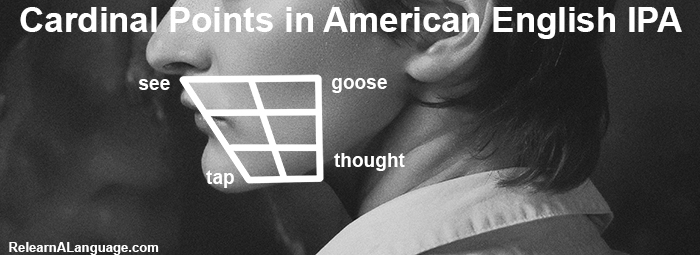
“See” and “goose” are both pronounced with our jaw closed, but with “see” our tongue is fully extended. (With “goose”, our tongue is closest to our throat.)
Likewise, “tap” and “thought” mean a fully open jaw, but “tap” has an extended tongue and “thought” a contracted tongue.
If each vowel sound is a town, the IPA chart is a map of your mouth showing where each town is located.
So when you look at the following chart on Canadian English, you can see those four cardinal vowels “mapped” with their individual letter sounds.
All other English vowels (“cut”, “cat”, “sit”, etc) are placed somewhere in the middle of these 4 cardinal points, represented on the map by their own letter sounds.
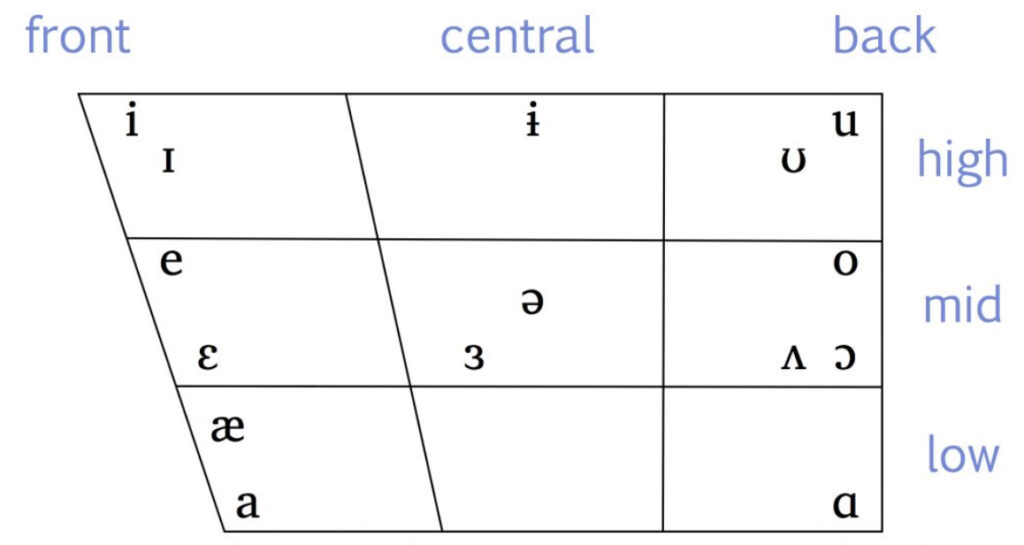
You don’t need to understand exactly how to read this chart to understand our next point–just the basic idea.
Because here are the vowels in Catalan vs Spanish:
Catalan
Spanish


There are to big differences in Catalan vs Spanish pronunciation.
The first is that there are simply more vowel sounds in Catalan. Between the Spanish e and a, Catalan also has its own ɛ–a sound that falls in the middle. This is like the English word “dead”.
Catalan also has an open ɔ, which is an open o sound like in the English word “cut”.
Finally, Catalan has a shwa–the totally natural ə, like in the English words “alone” or “the“.
The second difference is that Catalan vowels are more centered in the mouth.
So if you listened to the Spanish word sí and the Catalan word sí, the Spanish accent would push that vowel to the very front of the mouth and have the tongue all the way outstretched, like in the English word “seed”.
The Catalan accent would let the tongue and mouth relax slightly–almost like the English word “sit”.
That said, let’s explore both accents and the vocabulary in each language by listening to some Catalan vs Spanish.
(If you want a full Catalan pronunciation tutorial, you can see our guide to learning the language.)
Catalan vs Spanish Listening Practice
Catalan
Spanish
Here are a few words we can examine:
la casa / la casa – when an s is between two vowels in Catalan, it’s pronounced more like a z. (Which is why the letter ç, which sounds like an s, is so handy.)
el garatge / el garaje – You’ll notice el is pronounced more like “al” in Catalan. When a word ends with the letter e, it’s also more a-like.
la sala d’estar / la sala de estar – Catalan is happy to skip the double vowel sounds and collapse de estar into d’estar. This also happens with el and la when they are followed by a vowel sound. (See l’habitació below.)
les escales / la escalera – In Spanish, la escalera in plural is las escaleras. But in Catalan, la becomes les and escala becomes escales. (Although it’s pronounced almost identically to in Spanish.)
l’habitació / la habitación – Many -ción words (English -tion words) become -ció in Catalan. There are, of course, some notable differences however: with English translation becoming tradució or tradución, and the “conversation” or convercación becoming conversa.

4. Catalan vs Spanish Grammar
One of the historic justifications for the suppression of the Catalan language has been that it’s a “poor dialect” of Spanish.
That’s because generally, many Romance languages have extremely similar grammar.
Even in a very surface interaction, it’s easy to see some of those similarities:
Let’s use these examples to explore the differences in Catalan vs Spanish grammar.
Phatic Language
Phatic phrases are the little things that we do to be polite: from “thank you very much” to “hey what’s up” and even the infinite ways to say “bye” we have in every language.
These little social politeness-es often have their own fun stories. (For example, the word “hello” was introduced with the advent of the telephone; the Italian “ciao” is from the Venetian language, and originally meant “always at your command”.)
Because of these fun, secret histories, one of the joys of learning Catalan is getting to know it’s romance neighbors in a new way.
Let’s look at some fun words in Catalan vs their equivalents in Spanish and now, for the first time, a bit of French.
Catalan
Spanish and French
hola
si us plau
moltes gràcies
merci
hola
s’il-vous-plaît
muchas gracias
merci
An incorrect assumption would be that Catalan is simply taken these words from it’s neighboring tongues. Instead, these high frequencly words likely co-evolved.
Hola may have come into both Spanish and Catalan from the Arabic Allah (“god”) during the Moorish occupation of the peninsula.
Si us plau and s’il-vous-plaît means literally, in both languages, “if it pleases you all”.
Interesting enough, moltes gràcies and muchas gracias likely come from the same period of religious influence as merci. All literally meaning “by grace” or “mercy”.
Now, let’s examine the grammar of a few other sentences from that video.
How do you call yourself?
Catalan
Spanish
Com et dius?
Jo em dic…
Com estàs?
Jo estic molt bé
¿Como te llamas?
Me llamo…
¿Como estás?
Estoy muy bien.
These greetings reflect the incredible similarities in two things:
- The similarities in use of the verbs ser/estar (in English “to be”)
- The similar uses of reflexive verbs
But don’t be fooled.
Here are some other uses of ser/estar and reflexive pronouns.
Catalan
Spanish
Soc a Barcelona i estic cansada.
Ella m’havia dit, però no li responía.
Vull donar-me un pentinat.
Estoy en Barcelona y estoy cansada.
Ella me habia dicho, pero no le responía.
Quiero donarme un peinado.
Often with Catalan and Spanish, the similarities can be easily discovered… but after further digging, you’ll find nothing overlaps as perfectly as you might hope.
In fact, here are two pronoun charts you can take a look at.
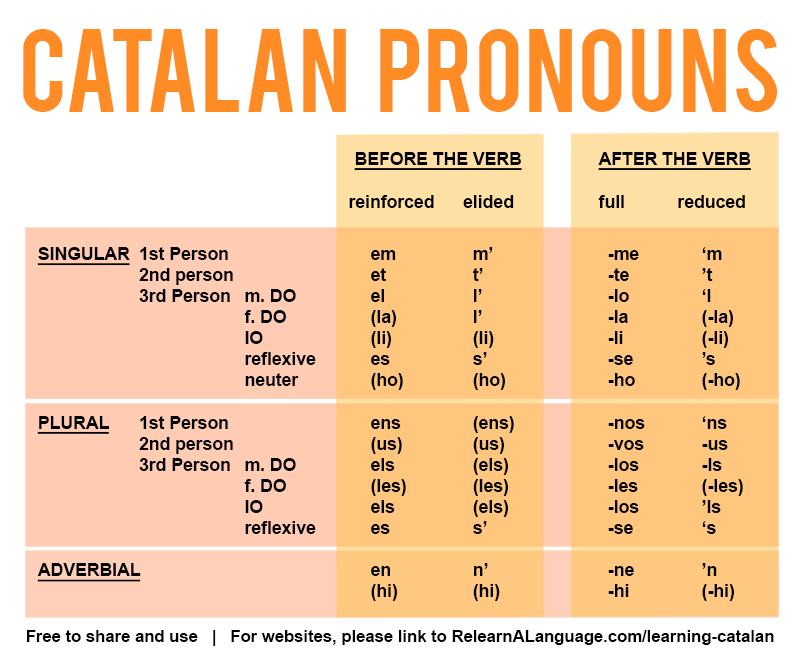
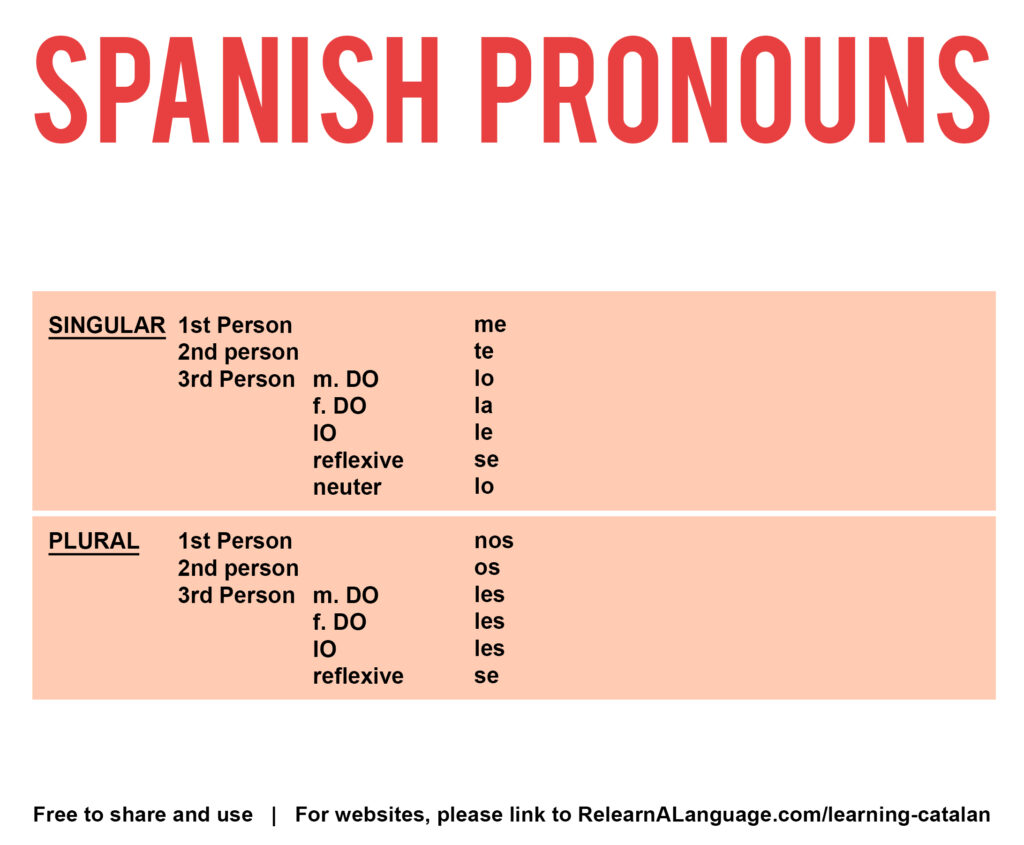
Catalan has the most common pronouns out of any Romance language –and for native Spanish speakers, they’re often one of the harder things to master.
Catalan vs Spanish Verb Tenses
Verbs between Catalan and Spanish are some of their biggest differences.
Without getting too far into verb types or conjugation patterns, let’s quickly explore the main times and moods that Spanish and Catalan can produce.
Catalan
Spanish
Infinitive: Caminar (to walk)
Present: Camino
Present continuous: Estic caminant
(“I am” + gerund)
Present perfect: He caminat
(Haver “I have” + “walked”)
Future Simple: Caminaré
Future Auxilary: —
Past Simple: vaig caminar
(“I go” + “to walk” = past)
Past continuous: Caminava
(I was walking, I used to walk)
Past perfect: havia caminat
(haver “I have” + gerund)
Conditional: caminaría
Subjunctive: camini
Imperfect subjunctive: caminis
Infinitive: Caminar (to walk)
Present: Camino
Present continuous: Estoy caminando
(“I am” + gerund)
Present perfect: He caminado
(Haver “I have” + “walked”)
Future Simple: Caminaré
Future Auxilary: Voy caminar
(“I go” + “to walk” = future)
Past Simple: Caminé
Past continuous: Caminaba
(I was walking, I used to walk)
Past perfect: habia caminado
(haver “I have” + gerund)
Conditional: caminaría
Subjunctive: camine
Imperfect subjunctive: caminara

5. Catalan vs Spanish Vocabulary
Finally, we have the vocabulary differences between Catalan vs Spanish.
In the next sections, we’ll explore similarities and differences between a few word lists.
Numbers in Catalan
Numbers in Spanish
Days in Catalan
Days in Spanish
- dilluns
- dimarts
- dimecres
- dijous
- divendres
- dissabte
- diumenge
- lunes
- martes
- miércoles
- jueves
- viernes
- sábado
- domingo
The Body in Catalan
The body in Spanish
Animals in Catalan
Animals in Spanish
- 🐶 el gos
- 🐱 el gat
- 🐦 l’ocell
- 🐟 el peix
- 🐎 el cavall
- 🐷 el porc
- 🐒 el mico
- 🐭 el ratolí
- 🦇 el ratpenat
- 🐶 el perro
- 🐱 el gato
- 🐦 el pájaro
- 🐟 el pez
- 🐎 el caballo
- 🐷 el cerdo
- 🐒 el mono
- 🐭 el ratón
- 🦇 el murciélago
Colors in Catalan
Colors in Spanish
Food in Catalan
Food in Spanish
- ☀️ 🍽️ l’esmorzar
- 🕛 🍽️ el dinar
- 🌙 🍽️ el sopar
- 🍳 l’ou
- 🍞 el pa
- 🧀 el formatge
- 🍖 la carn
- 🍦 el gelat
- 🎂 el pastís
- 🍏 la poma
- 🥔 la patata
- 🍓 la maduixa
- 🍄 el bolet
- ☀️ 🍽️ el desayuno
- 🕛 🍽️ el almuerzo
- 🌙 🍽️ la cena
- 🍳 el huevo
- 🍞 el pan
- 🧀 el queso
- 🍖 la carne
- 🍦 el helado
- 🎂 el pastel / la torta / la tarta
- 🍏 la manzana
- 🥔 la papa / la patata
- 🍓 la fresa
- 🍄 el champiñone

6. Learn Spanish and Catalan
If you’re considering learning or improving Spanish or Catalan (or both together), I suggest my master article on learning Catalan.
(Especially the end, where I suggest what I would have done differently if I knew then what I know now.)
I also suggest my free mini-course which will help you build your own at-home immersion in Catalan no matter where in the world you live.
Click the image to go to the mini-course!
My favorite resource lists for learning
Spanish and Catalan
Read More About Spanish vs Catalan
If you want to read the academic and practical sources where much of this article came from, I suggest the following books:
1000 Años de la Lengua Española has a great linguistic history of both languages. (Just note that it’s written in Spanish with no English translations available.)
Complete Catalan Grammar has the most information about Catalan grammar out of any book on the market and is available in English.
Teach Yourself Catalan has good information about pronunciation rules and simple grammar explanations.
Comparative Grammar of Spanish, Portuguese, Italian, and French doesn’t have Catalan but many of their explanations (and the book’s layout) were drawn on as inspiration for this article.
Do you have any lingering questions about Catalan vs Spanish? Leave them in the comments!
